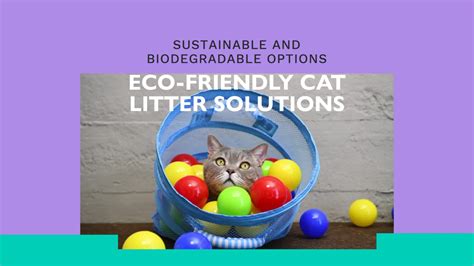Introduction
With the growing awareness of environmental issues, pet owners are increasingly seeking sustainable alternatives to traditional cat litter. Compostable cat litter offers a biodegradable and environmentally friendly option that can significantly reduce waste and protect the planet.

Compostable Cat Litter vs. Traditional Clay Litter
| Feature | Compostable Cat Litter | Traditional Clay Litter |
|---|---|---|
| Compostability | Biodegradable and breaks down in compost | Not compostable and ends up in landfills |
| Sustainability | Reduces waste and promotes environmental protection | Contributes to landfills and resource depletion |
| Odor Control | Effective odor control with natural ingredients | May not be as effective at odor control |
| Cost | Generally more expensive than clay litter | Can be more economical |
| Availability | Becoming more widely available | Widely available |
Benefits of Compostable Cat Litter
- Environmental Sustainability: Compostable cat litter reduces waste and promotes a circular economy by breaking down and returning nutrients to the soil.
- Odor Control: Despite the biodegradable nature, compostable cat litter effectively controls odor using natural ingredients such as baking soda.
- Health and Safety: Compostable cat litters do not contain harmful chemicals or dust, making them safer for pets and owners alike.
- Convenient Disposal: Compostable cat litter can be conveniently disposed of in compost bins or green waste facilities.
How to Choose the Best Compostable Cat Litter
When selecting a compostable cat litter, consider the following factors:
- Absorbency: Look for litters with high absorbency to minimize odor and prevent clumping.
- Odor Control: Choose litters with effective odor control mechanisms using natural ingredients.
- Composition: Opt for litters made from sustainable materials such as plant fibers, recycled paper, or wood chips.
- Compostability: Ensure the litter is certified as compostable by reputable organizations.
Compostable Cat Litter Trending and Future Improvements
Compostable cat litter is an emerging market with significant growth potential. Innovation is driving the development of new materials and technologies to improve litter performance:
- Plant-Based Materials: Research is focused on utilizing plant-based fibers such as corn husks and bamboo pulp for litter production.
- Odor-Enhancing Additives: Researchers are exploring natural odor-enhancing additives such as essential oils and bioenzymes to improve odor control.
- Convenience and Automation: Smart litter boxes that automatically remove and compost waste are being developed for added convenience.
Common Mistakes to Avoid
- Overfilling the Litter Box: Avoid overfilling the litter box, as it can lead to reduced absorbency and odor control.
- Not Cleaning Regularly: Regular cleaning is crucial to prevent odor buildup and provide a hygienic environment for your cat.
- Using Non-Compostable Liners: Avoid using plastic liners in the litter box, as they interfere with the composting process.
- Composting in Uncertified Facilities: Ensure the compostable cat litter is disposed of in certified composting facilities to facilitate proper breakdown.
Conclusion
Compostable cat litter offers a sustainable and environmentally friendly alternative to traditional clay litter. By adopting compostable litter, pet owners can make a significant contribution to reducing waste and protecting the planet for generations to come. As the market continues to grow and innovations emerge, compostable cat litter will become the preferred choice for eco-conscious pet owners seeking a sustainable solution for their feline companions.





















